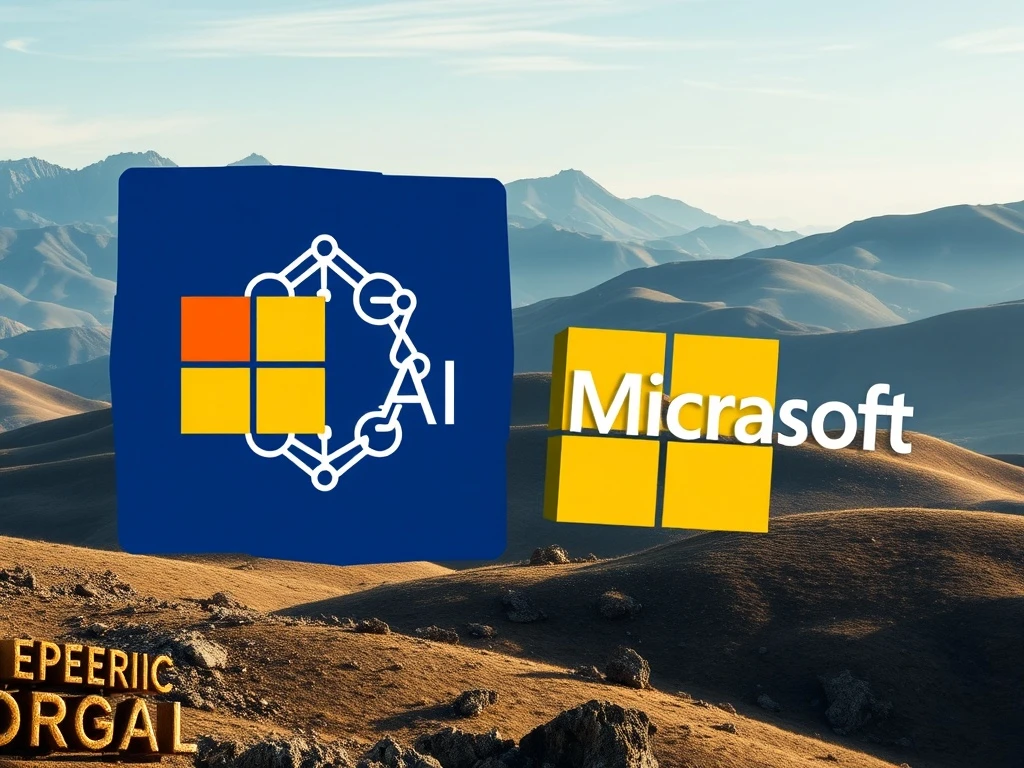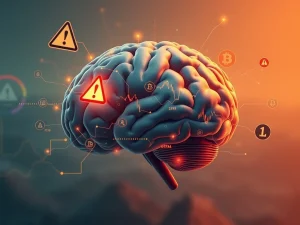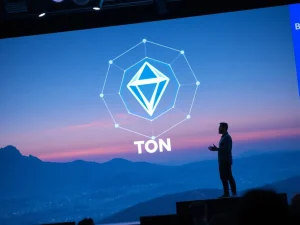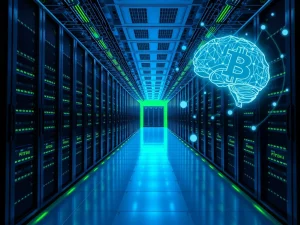Revolutionary OpenAI Restructuring: Microsoft Agreement Reshapes AI Governance

In the rapidly evolving digital landscape, where technology giants often dictate future trends, a significant development at OpenAI is capturing global attention. Many in the cryptocurrency space closely monitor such shifts, recognizing that advancements in artificial intelligence (AI) and changes in corporate governance models can profoundly impact the broader digital economy, including decentralized ecosystems. This week, OpenAI, a leading force in AI innovation, announced a pivotal **OpenAI restructuring** agreement with its largest investor, Microsoft. This move is poised to redefine how powerful AI entities operate, merging commercial ambitions with a public benefit mission.
Understanding the OpenAI Restructuring Agreement
OpenAI recently signed a non-binding memorandum of understanding with Microsoft, its primary financial backer. This agreement outlines a significant transformation for the AI company. The core of this plan involves transitioning OpenAI’s for-profit arm into a public benefit corporation. Crucially, the original nonprofit entity will maintain overarching control of the entire organization. This hybrid structure aims to balance rapid technological advancement with a commitment to societal well-being.
This strategic shift, initially proposed in May, reflects a deliberate effort to solidify OpenAI’s foundational mission. The company’s CEO, Sam Altman, reiterated this commitment in May, stating, “OpenAI was founded as a nonprofit, is today a nonprofit that oversees and controls the for-profit, and going forward will remain a nonprofit that oversees and controls the for-profit. That will not change.” Therefore, the new arrangement reinforces the nonprofit’s guiding hand, ensuring that commercial pursuits align with the company’s broader public benefit objectives. Furthermore, under this innovative deal, the nonprofit arm will hold a substantial stake, valued at over $100 billion, in the newly formed public benefit corporation. This significant equity stake underscores the nonprofit’s enduring influence and financial interest in the company’s success and mission.
The Role of a Public Benefit Corporation
A public benefit corporation (PBC) represents a relatively new corporate legal structure. It allows companies to pursue both profit and a specific public benefit. Unlike traditional corporations, PBCs are legally bound to consider the impact of their decisions on society and the environment, alongside shareholder returns. This structure provides a formal framework for embedding social responsibility into the company’s DNA. For OpenAI, transitioning its for-profit arm into a PBC means:
- **Dual Mission:** The company will be legally obligated to pursue both financial success and its stated public benefit, which centers on ensuring that artificial general intelligence (AGI) benefits all of humanity.
- **Accountability:** Directors and officers must consider stakeholders beyond just shareholders, including employees, customers, the community, and the environment.
- **Transparency:** PBCs often face increased reporting requirements regarding their social and environmental performance, fostering greater public trust.
Consequently, this move reflects a proactive step by OpenAI to formalize its commitment to ethical AI development and deployment. The **public benefit corporation** model provides a robust legal foundation for balancing innovation with societal impact, a critical consideration in the rapidly advancing field of AI.
Shaping AI Governance and Regulatory Engagement
The **OpenAI restructuring** also brings significant implications for **AI governance**. The company signaled its intent to collaborate closely with policymakers. Specifically, OpenAI stated it would “continue to work with the California and Delaware Attorneys General” as part of the restructuring plan. This indicates a clear need for regulatory approval and engagement with local authorities. OpenAI’s physical headquarters are in San Francisco, California, while the company is legally incorporated in Delaware, making both states crucial for the approval process. Therefore, securing the green light from these jurisdictions is a vital step in formalizing the new structure.
This engagement with state attorneys general highlights the increasing scrutiny and regulatory interest in AI development. Governments worldwide are grappling with how to effectively govern powerful AI technologies. OpenAI’s proactive approach to involving policymakers in its structural changes could set a precedent for future interactions between tech giants and regulators. Moreover, this collaboration aims to ensure that the company’s innovative corporate model aligns with legal and ethical standards, fostering a more responsible development of AI.
The Unique Model of Nonprofit Control
The concept of **nonprofit control** over a for-profit entity is a defining characteristic of OpenAI’s structure. This arrangement is designed to safeguard the company’s original mission: to ensure that artificial general intelligence (AGI) benefits all of humanity. By keeping the nonprofit in charge, OpenAI aims to prevent purely commercial interests from overriding its ethical commitments. This unique governance model ensures that strategic decisions, technological development, and the ultimate deployment of AI systems remain guided by a public-centric mission rather than solely by profit motives.
Many observers view this hybrid model as an innovative solution to the inherent tensions between rapid technological innovation and responsible societal impact. It attempts to harness the capital and talent attraction of a for-profit structure while maintaining the ethical compass of a nonprofit. Consequently, this governance model is under close watch globally, potentially influencing how other groundbreaking technologies are developed and managed in the future.
OpenAI’s Journey: From Nonprofit to Global AI Leader
Founded in 2015 by prominent tech figures including Elon Musk and Sam Altman, OpenAI initially launched as a nonprofit research laboratory. Its mission focused on advancing artificial intelligence in a safe and beneficial way. The company quickly rose to prominence, becoming responsible for the development of ChatGPT, one of the most significant large language models to emerge in the last decade. ChatGPT’s widespread adoption demonstrated the immense potential and capabilities of modern AI, bringing the technology into mainstream consciousness.
However, OpenAI’s journey has not been without its challenges. In late 2023, the company faced considerable scrutiny when its board of directors unexpectedly removed Sam Altman as CEO. The board cited a lack of consistent candor in his communications as the reason. This decision triggered immediate and widespread backlash from staff, investors, and the public. Consequently, intense pressure led to Altman’s reinstatement within a matter of days, highlighting the critical importance of leadership stability and transparency within such a pivotal organization. This episode underscored the complex dynamics of **AI governance** and the delicate balance required to manage a company at the forefront of such transformative technology.
Financial Landscape and Future Outlook Post-Microsoft OpenAI Agreement
The announcement of the **Microsoft OpenAI agreement** and the restructuring plan follows a period of significant financial activity for the company. Approximately a month prior to this notice, OpenAI successfully raised $8.3 billion in new funding. This substantial investment propelled its valuation to an impressive $300 billion, cementing its position as one of the world’s most valuable private technology companies. Furthermore, industry analysts reportedly expect OpenAI to generate a total revenue of $12.7 billion in 2025, signaling robust financial growth and market confidence in its AI innovations.
This financial strength, combined with the new corporate structure, positions OpenAI for sustained development and impact. The transition to a **public benefit corporation** while maintaining **nonprofit control** provides a unique framework for managing this growth responsibly. It allows the company to continue attracting top talent and capital necessary for cutting-edge research, while simultaneously adhering to its core mission of developing AI for the common good. This model could potentially offer a blueprint for other tech companies seeking to integrate social responsibility with commercial success in high-impact fields.
Broader Implications for the Tech Industry
The **OpenAI restructuring** and the comprehensive **Microsoft OpenAI agreement** represent a pivotal moment not just for the company, but for the entire technology sector. This innovative governance model could inspire other leading tech firms, especially those developing powerful, potentially world-changing technologies, to reconsider their corporate structures. The emphasis on **nonprofit control** and the **public benefit corporation** status signals a growing recognition of the ethical responsibilities inherent in advanced technological development.
As AI continues its rapid evolution, discussions around ethical guidelines, safety, and societal impact will only intensify. OpenAI’s move provides a tangible example of a company attempting to institutionalize these considerations within its fundamental legal and operational framework. Therefore, this development offers valuable insights into the future of corporate governance in the age of artificial intelligence, setting a potential precedent for how innovation can be pursued alongside a steadfast commitment to public welfare.








